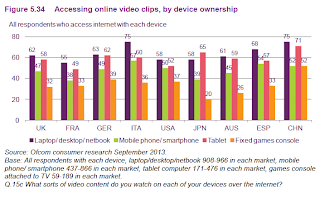“Now more than ever, major brand marketers need to understand the complex interplay between different marketing channels, and online-offline in particular,” says Jon Vein, Co-founder and CEO of MarketShare. “This analysis for Twitter is shedding new light on today’s complex consumer journey and how companies can profit from these insights in an increasingly multi-screen world.”
“We have always believed that Twitter is a powerful complement to television, and this study supports that,” says Adam Bain, President of Global Revenue for Twitter. “MarketShare’s ground-breaking work, using big data techniques and leading edge analytics, helps us quantify how Twitter can be a force multiplier, making television advertising even more effective than ever”.
Study Goals and Findings
MarketShare’s analysis aimed specifically to measure the impact of Twitter paid products – promoted tweets, accounts and trends – on driving subscriber growth for mobile carriers in the UK. Results shed light on Twitter’s role in driving new mobile subscribers, the role of marketing spend in stimulating Twitter engagement and increasing sales, and how Twitter advertising affects TV ad performance.
Results indicate an “amplification” effect from Twitter promotions that helped mobile carriers improve ROI on their television ad spending. Paid Twitter programs also drove increases in other business outcomes for UK mobile carriers, including positive user commentary about marketing campaigns and branded search volume.
The study showed that Twitter paid advertising at a relatively small amount of spend – about 1.5% of total budgets on average – produced 9.5% of marketing’s overall contribution to sales. By comparison, online display ads consumed 5.1% of ad spending and delivered 5.5% of results. Print spending, meanwhile, was 31.7% of the total, while delivering 34.5% of the results.
MarketShare also measured how “share of voice” in the world of Twitter conversations (tweets; re-tweets, mentions, etc.) contributed to a lift in sales for UK mobile service providers. The study established that a simulated 10% increase in positive share of voice for service produces a 0.5% lift in sales. Likewise, a 30% boost in positive service-related conversations would lift sales 1.5% percent.
As marketing complexity continues to expand, big brands are seeking new insights into how marketing channels interact, and how best to allocate marketing dollars. Now, with the help of MarketShare’s advanced marketing analytics expertise, Twitter has quantified the financial impact of paid advertising on its platform with true return-on-investment (ROI) metrics that help brands make more informed marketing choices. Future analysis will further explore the interplay between Twitter, TV and other marketing channels across more categories and geographies."
Source: Press release by MarketShare, 19th December 2013

























